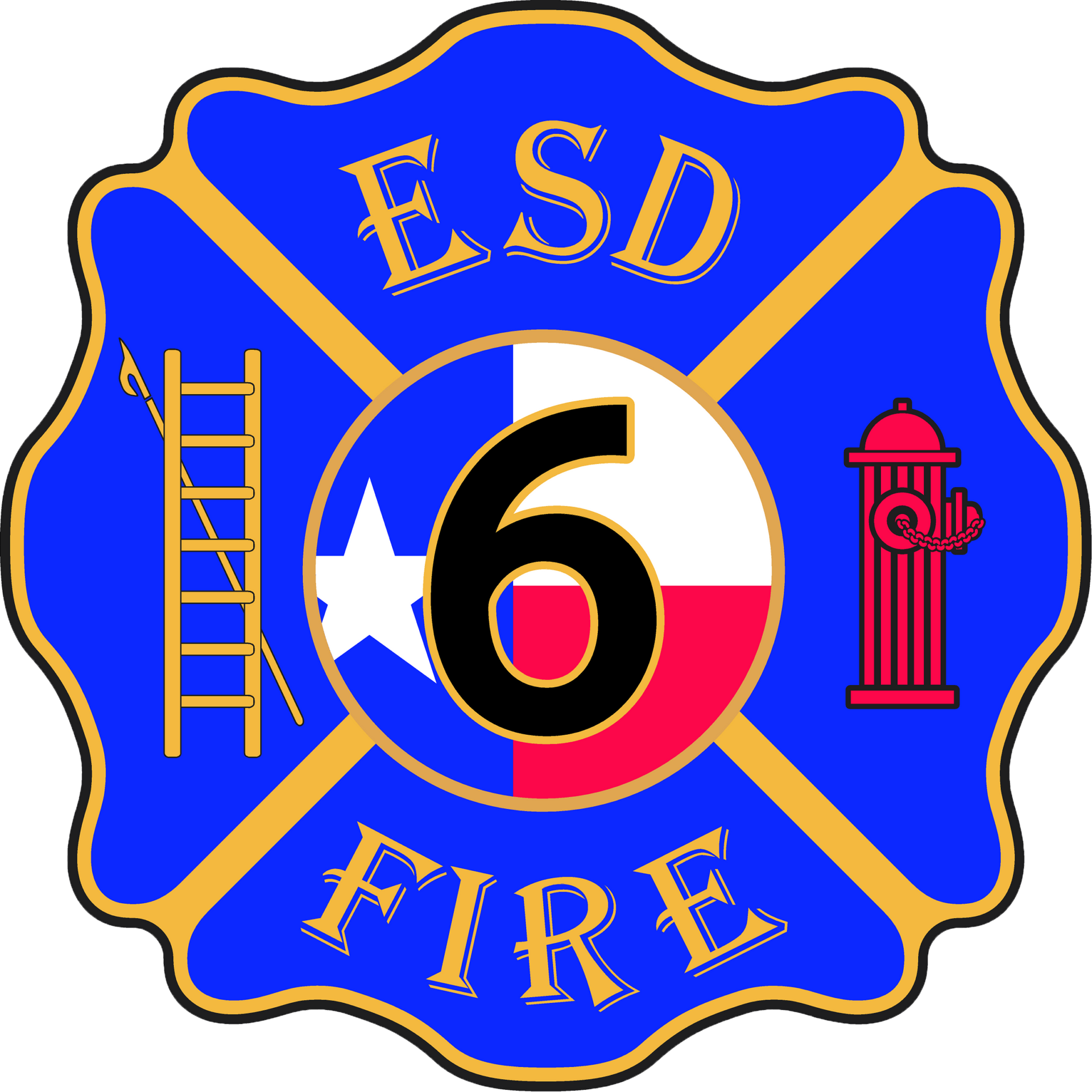Ellis County Emergency Service District (ESD) 6
Fiscal Sustainability
Who is ESD 6 and What Services Does ESD 6 Provide?
Emergency Services District 6 (ESD 6) is a local government agency established in 2003 by a vote of Ellis County residents to provide fire protection and first responder services in specific unincorporated areas of the county. ESD 6 serves approximately 15,000 residents over 140 square miles with three stations located in the Waxahachie and Forreston areas.
ESD 6 currently staffs Fire Station 1 with two (2) firefighters 24/7 and Fire Station 2 is staffed with two (2) firefighters twelve 12 hours a day, 7 days a week. ESD 6 contracts with the Forreston Fire Rescue for their third station. The Forreston Fire Rescue responds to Fire & EMS responses in the Forreston area and provides additional resources in the remainder of the ESD 6 boundary.
ESD 6 is one of about 300 emergency services districts in Texas, 12 of which are located in Ellis County. ESDs are funded through real estate and personal property ad valorem property tax and may contract with service providers.
Ballot Information
In November 2025, Ellis County residents served by ESD 6 will have the opportunity to vote in a sales tax election, to adopt a sales tax rate of 8.25%. The revenue generated from the 2% increase can be used to help strengthen emergency services within the district, help reduce emergency response times, which are currently hindered by staffing limitations and high call volumes from the rapid growth Ellis County, and help build a new fire station within the district.
Are ESD 6’s Resources Keeping Up with Community Needs?
Ellis County is experiencing rapid growth, with an estimated 51,000 new residents moving into the area over the past five years. The surge in population has placed a strain on current emergency services. With more residents and increased development, the volume of emergency calls has risen steadily (18% increase from 2023 to 2024), yet staffing levels and resources have not kept pace, resulting in longer response times and added pressure on first responders.
The rise of operational costs is another key aspect in needing additional funding. The price of fire equipment has also steadily increased over the years and is stretching an already tight budget. Without increased funding and support, ESD 6 will struggle to maintain the level of service that the community needs and expects.
Increased revenue could help support efforts to improve the district’s Insurance Services Office (ISO) rating. ESD 6 currently holds an ISO rating of 8B, which results in higher insurance premiums for homeowners. Increased staffing and updated equipment can strengthen overall fire service that may help improve the district's ISO rating to a 5 or lower, reducing insurance costs for homeowners.
1. What are the three stations within ESD 6?
These are the three stations currently operating within ESD 6 boundaries:
- Ellis County ESD 6 Station 1: 1816 FM 66 Waxahachie, TX 75167
- Ellis County ESD 6 Station 2: 306 Industrial Drive, Waxahachie, TX 75165
- Forreston Fire Rescue: 114 Forreston Road, Forreston, TX 75041
2. How is the ESD currently funded?
ESD 6 currently operates on income collected via ad valorem property tax at a rate of .0755 per $100 of home value. For the fiscal year 2024-2025, the budget is projected at $1,869,118.00 of revenue. This sole revenue source is insufficient to meet the growing demands of the ESD.
3. How can the ESD generate additional revenue?
- In Texas, the state collects $0.0625 (6.25%) on every dollar spent but allows other local government entities to collect up to $0.02 (2%), with a state maximum of $0.0825 (8.25%), to support community services.
- By adopting a sales tax of up to two percent (2%), the District could expand its funding base beyond just local prperty owners. Visitors and travelers passing through our community - who also rely on our emergency services when needed - would help share in supporting these critical resources.
4. What is the current sales tax rate?
The current sales tax rate is 6.25%. A proposed sales tax increase could raise the sales tax up to 2%, bringing the sales tax rate to 8.25%.
5. What is the estimated revenue with a proposed sales tax increase?
The proposed sales tax revenue is estimated to generate approximately $865,000 per year for Ellis County ESD 6.
6. How would additional funding assist ESD 6??
- Help increase staffing: Currently, ESD 6 has two Firefighters 24/7 at station 1 and 2 Firefighters from 8 a.m. to 8 p.m. 7 days a week at station 2. These staffing levels are well below the recommended staffing levels. Hiring additional personnel can ensure that each station has four firefighters on duty, which would improve emergency response time and lower the ISO rating.
- Help Fund an additional FIre Station: Increased funds can help finance the construction of an additional fire station within the district's boundaries. This can expand coverage and ensure that emergency services are more accessible to a growing population and reduce response time.
- Invest in new Equipment: As equipment costs continue to rise, funds can help ESD 6 maintain modern and reliable equipment to respond effectively to emergencies.
- Help improve the ISO Rating: The district's Insurance Services Office (ISO) rating is currently 8B, improving the items above can help lower the rating to a 5 or lower. Improving the ISO rating could lead to lower insurance premiums for homeowners.
7. What is the current average response time?
The current average response time ranges from 4 to 20 minutes, with a median response time of over 10 minutes, above the local and national response time standards.
